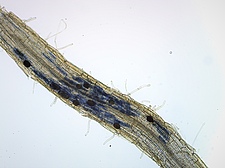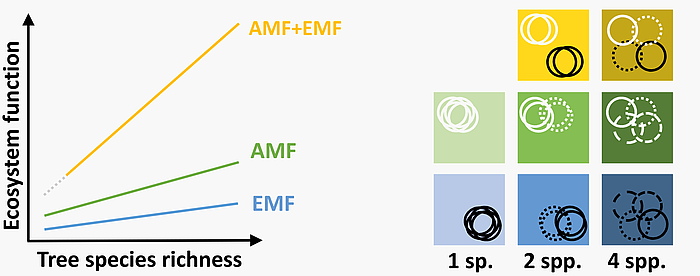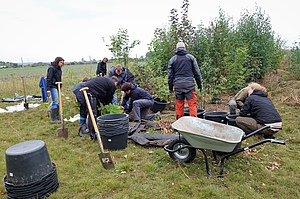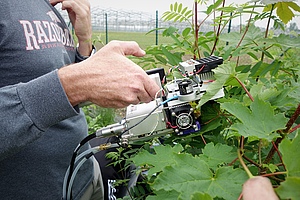Research
Background
Plant mycorrhization occurs in roots in most of the terrestrial plant species and is commonly known to enhance plant growth (Smith & Read, 2010; Ferlian et al., 2018). Mycorrhizal fungi supply the plant with soil water and nutrients in exchange for photosynthetic products from the plant. As a consequence, mycorrhizal fungi have been proposed to play a critical role in positive biodiversity-ecosystem functioning relationships (Klironomos et al., 2000; Schnitzer et al., 2011). Different mycorrhizal types coexist and considerably differ in their morphological and physiological characteristics that facilitate dissimilar soil nutrient uptake processes. Associations with different mycorrhizal types may, therefore, increase complementary use of resources among plant species in diverse plant communities.
In the MyDiv Experiment, we integrate interactions between plants and mycorrhizal types into the common setting of biodiversity-ecosystem functioning experiments. We test the hypothesis that tree communities with diverse mycorrhizal types will utilise soil nutrients more complementarily than tree communities with a single mycorrhizal type. Therefore, treatments combining high tree species richness and presence of both mycorrhizal types are expected to increase resource uptake and, consequently, complementarity resulting in the highest tree performance. We manipulate the two
main mycorrhizal types (via respective tree species selection) along a tree species richness gradient.
Left: hypothetical relationship between tree species richness and ecosystem functions in the different tree
communities in the MyDiv Experiment. Right: the underlying resource use scenarios in tree species that coexist in a community
and are limited by a set of resources. The boxes represent resource space; the circles represent tree species
that are different when lines are different (modified after Ferlian et al., 2018).
References
Eisenhauer N, Reich PB, Scheu S. 2012. Increasing plant diversity effects on productivity with time due to delayed soil biota effects on plants. Basic and Applied Ecology 13: 571-578.
Ferlian O, Cesarz S, Craven D, Hines J, Barry KE, Bruelheide H, Buscot F, Haider S, Heklau H, Herrmann S, Kühn P, Pruschitzki U, Schädler M, Wagg C, Weigelt A, Wubet T, Eisenhauer N. 2018. Mycorrhiza in tree diversity–ecosystem function relationships: conceptual framework and experimental implementation. Ecosphere 9:e02226.
Klironomos JN, McCune J, Hart M, Neville J. 2000. The influence of arbuscular mycorrhizae on the relationship between plant diversity and productivity. Ecology Letters 3: 137-141.
Paquette A, Hector A, Castagneyrol B, Vanhellemont M, Koricheva J, Scherer-Lorenzen M, Verheyen K et al. 2018. A million and more trees for science. Nature ecology & evolution 2: 763.
Reich PB, Tilman D, Isbell F, Mueller K, Hobbie SE, Flynn DF, Eisenhauer N. 2012. Impacts of biodiversity loss escalate through time as redundancy fades. Science 336: 589-592.
Schnitzer SA, Klironomos JN, HilleRisLambers J, Kinkel LL, Reich PB, Xiao K, Rillig MC, Sikes BA, Callaway RM, Mangan SA et al. 2011. Soil microbes drive the classic plant diversity-productivity pattern. Ecology 92: 296-303.
Smith SE, Read DJ. 2010. Mycorrhizal symbiosis. Academic press, London.







